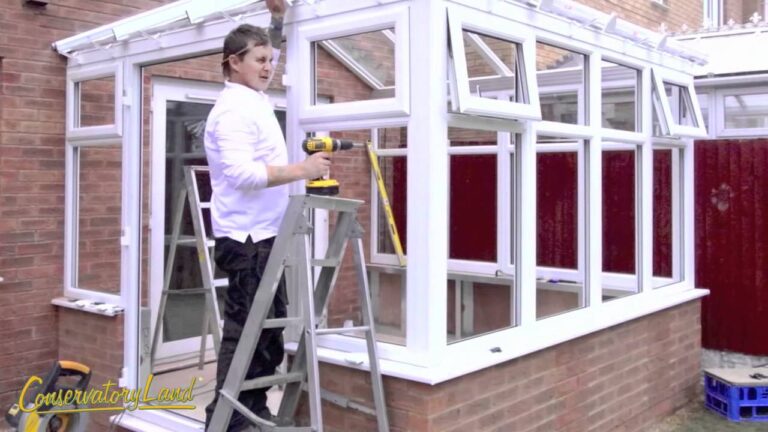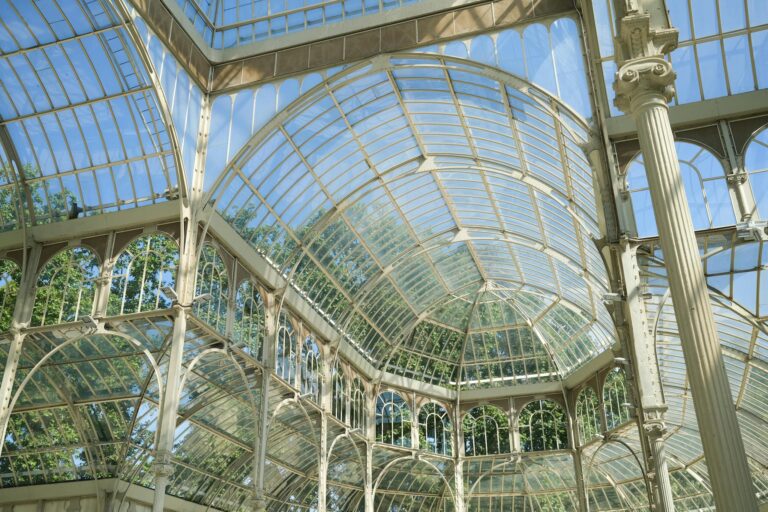House Plans With Conservatory
In the realm of modern architecture, house plans with conservatories represent a fascinating intersection of aesthetics and functionality, providing a unique space where the natural world can be appreciated year-round, regardless of the whims of weather. These designs not only introduce an abundance of natural light but also offer a versatile environment conducive to a myriad of activities, from tranquil relaxation to vibrant social gatherings.
As we explore the nuances of incorporating a conservatory into residential designs, considerations ranging from energy efficiency to planning permissions emerge as critical factors, each adding layers of complexity and opportunity to these spaces. The journey through these considerations unveils the transformative potential of conservatories in enhancing both the value and the living experience of a property.
Key Takeaways
- Conservatories enhance homes by blending indoor comfort with outdoor nature, boosting both aesthetics and property value.
- Proper design and insulation support year-round enjoyment, making conservatories a versatile addition.
- Small house plans can incorporate conservatories efficiently, offering a spacious feel and connection to the outdoors in compact areas.
- Planning permission is crucial for conservatory construction, requiring adherence to local regulations and potentially increasing energy efficiency.
Overview of House Plans with Conservatories
House plans incorporating conservatories offer significant advantages, including enhanced living spaces that blend nature with comfort. Key design considerations must ensure these glass structures are both functional and aesthetically pleasing, aligning with the architectural integrity of the main residence.
This overview will explore the integration of conservatories into home designs, focusing on their benefits and the critical factors influencing their successful implementation.
Advantages of Integrating Conservatories
Integrating conservatories into residential designs significantly enhances natural light exposure, offering a myriad of advantages for occupants’ comfort and wellbeing. These benefits apply to both spacious house plans with conservatories and compact house plans with conservatories, where space is limited.
- Provides a seamless connection to the outdoors.
- Offers versatility for relaxation, dining, or plant cultivation.
- Can enhance the overall living experience when properly insulated for year-round use.
Key Design Considerations
Having explored the numerous benefits of conservatories, it is crucial to consider the key design elements that ensure these spaces are both functional and aesthetically pleasing in any home plan.
Optimal use of glass walls, roofs, and windows is essential for maximising natural light and facilitating an indoor-outdoor connection.
The design should also support year-round enjoyment, enhance home aesthetics, and potentially increase resale value, offering a serene, nature-connected retreat.
Small House Plans with Conservatories
Transitioning to small house plans with conservatories is essential to explore how these designs adeptly maximise space while maintaining aesthetic appeal and functional utility.
Creative layouts are pivotal in these compact spaces, ensuring the conservatory not only enhances natural light and nature connectivity but also serves as a versatile living area.
Such considerations are vital for achieving a harmonious balance between limited square footage and the desire for a spacious, light-filled conservatory.
Maximising Space in Small Designs
Small house plans cleverly incorporate conservatories to maximise space, offering homeowners enhanced natural light and a unique blend of indoor-outdoor living within compact layouts.
- Natural Light and Versatility: A sunroom enhances the interior ambiance, creating a cosy retreat.
- Strategic Placement: Conservatories are positioned to enhance living spaces without compromising the footprint.
- Indoor-Outdoor Connection: This design element ensures a spacious feel, catering to those seeking functionality and style in limited spaces.
Creative Layouts for Compact Spaces
Innovative design approaches allow compact house plans to incorporate conservatories, maximising space efficiency and introducing a luminous retreat within limited footprints.
These small house designs feature clever layouts that seamlessly integrate conservatories, enhancing charm and functionality.
Despite limited square footage, they prioritise natural light and a connection to nature, offering a cosy indoor-outdoor living experience and showcasing inventive ways to enhance living spaces with a sun-drenched sanctuary.
Energy Efficiency in Conservatory Designs
In the realm of conservatory designs, energy efficiency is paramount, not only for reducing environmental impact but also for enhancing homeowner comfort and reducing utility costs.
Techniques such as the integration of advanced glazing options, thermal breaks, and insulation methods are critical in achieving these goals.
Furthermore, the implementation of effective ventilation systems plays a pivotal role in maintaining optimal internal temperatures, thus ensuring energy-efficient operations throughout the year.
Techniques for Energy-Saving
Achieving energy efficiency in conservatory designs necessitates the implementation of specific techniques aimed at minimising heat loss and optimising thermal performance. To enhance energy efficiency:
- Utilise double or triple glazing and low emissivity glass in windows and doors to improve insulation and reduce heat transfer.
- Incorporate thermal breaks within the conservatory structure to prevent heat transfer.
- Integrate thermal mass elements, such as stone or brick flooring, to stabilise temperature fluctuations.
Maintaining Comfort Across Seasons
To ensure year-round comfort in conservatory designs, integrating energy-efficient features is essential. Elements like double-glazed windows and low-emissivity glass work collectively to minimise heat loss, optimise insulation, and regulate indoor temperatures. They reflect heat indoors during colder months and mitigate solar heat gain in warmer seasons.
Additionally, the incorporation of insulated foundations, walls, and energy-efficient roofing materials further fortifies the conservatory’s thermal efficiency. This ensures a consistently comfortable environment.
Obtaining Planning Permission for Conservatory
Before adding a conservatory to your house plans, it is crucial to familiarise yourself with the relevant rules and regulations to determine if planning permission is required.
Navigating the application process involves assessing the conservatory’s dimensions, materials, and location in relation to the original structure, ensuring adherence to UK planning guidelines.
Consulting with local planning authorities early can help avoid enforcement actions or the necessity of altering or removing the conservatory post-construction.
Understanding the Rules and Regulations
Navigating the complexities of planning permission for a conservatory requires a detailed understanding of local regulations and permitted development rights to ensure compliance and avoid potential legal challenges. Key considerations include:
- Specific criteria such as height limits and extension boundaries
- Variation in regulations across conservation areas, listed buildings, and designated zones
- The necessity of consulting local planning departments for guidelines on size, placement, and materials
Navigating the Application Process
Understanding the rules and regulations is a foundational step; the next critical phase involves meticulously preparing and submitting the necessary documentation for obtaining planning permission for a conservatory.
This includes detailed drawings, site plans, and a completed application form, reflecting considerations for size, location, design, and environmental impact.
Engaging with planning authorities early, addressing potential impacts on light, privacy, and aesthetics, ensures a smoother application process, fostering community harmony and regulatory compliance.
Blending Styles in Conservatory Designs
In the realm of conservatory designs, the amalgamation of traditional and modern elements signifies a strategic approach towards crafting a unique aesthetic that resonates with diverse architectural preferences.
The integration of distinctive materials such as oak and glass, alongside a thoughtful mix of furniture styles, plays a pivotal role in achieving a harmonious blend that encapsulates both comfort and contemporary elegance.
This synthesis not only enhances the visual appeal of conservatories but also promotes a versatile functionality, accommodating various stylistic and practical requirements.
Combining Traditional and Modern Elements
Blending traditional and modern elements in conservatory designs often results in a harmonious and visually captivating space, ideal for both relaxation and aesthetic appreciation.
Incorporating classic features such as brick walls or wood beams alongside sleek furniture or glass walls achieves a balanced aesthetic.
Mixing botanical elements with contemporary decor items enhances visual appeal.
Combining materials like wrought iron with modern design elements adds depth and interest.
Unique Materials: Oak, Glass, and Beyond
Building upon the foundation of combining traditional and modern elements, exploring the use of unique materials like oak and glass further elevates conservatory designs to new levels of sophistication and functionality.
The integration of oak’s timeless appeal with the expansive qualities of glass achieves a harmonious balance between warmth and clarity.
Incorporating varied materials such as wrought iron or stone introduces texture, enhancing visual interest and architectural integrity.
Specialised Conservatory Design Ideas
Exploring specialised conservatory design ideas reveals a spectrum of architectural styles, from the elegance of rooftop and orangery conservatories to the distinct character of Gothic and bespoke models.
These designs prioritise the integration of advanced features such as glass walls, skylights, and climate control systems, tailored to enhance both the aesthetic appeal and functional utility of the conservatory.
Rooftop and Orangery Styles
Rooftop conservatories, characterised by their strategic placement atop buildings to harness maximum natural light, and orangery styles, distinguished by their robust construction featuring brick or stone walls coupled with expansive windows, exemplify specialised conservatory designs that merge contemporary appeal with traditional aesthetics.
- Rooftop conservatories transform urban spaces into green retreats.
- Orangeries offer a sophisticated, permanent extension to living spaces.
- Both styles blend modern functionality with classic charm, enhancing home value and lifestyle.
Gothic and Custom-made Conservatories
Delving into the realm of specialised conservatory design, Gothic and bespoke conservatories stand out for their architectural intricacy and tailored functionality, respectively.
Gothic conservatories enchant with medieval-inspired tracery, pointed arches, and ornate details, while bespoke options offer customisation for unique spaces, integrating personal tastes in materials and features.
These designs not only embody elegance but also versatility, enhancing living spaces with options like self-cleaning glass and underfloor heating for ultimate comfort.
Enhancing Your Property with a Conservatory
Integrating a conservatory into house plans presents a strategic approach to enhancing property value and improving its aesthetic appeal. This architectural addition not only acts as a connecting space between indoor and outdoor areas but also enhances the overall marketability of the property.
Moreover, the smooth integration of conservatories with outdoor spaces promotes a harmonious mix of natural beauty and cosy living areas, increasing the usefulness and attractiveness of the property.
Benefits to Property Value and Aesthetics
Adding a conservatory to a property is not just an aesthetic enhancement; it is an investment that can increase the property’s value by up to 7%, highlighting the dual benefits of aesthetic appeal and financial gain.
- Versatility: Serves various functions such as a dining area, lounge, or home office.
- Durability: With proper maintenance, it offers a long-term enhancement.
- Natural Light: Improves the overall appeal by connecting the indoors with the outdoors.
Connecting Conservatory with Outdoor Spaces
How can a conservatory bridge the gap between your home’s interior and the natural beauty of your outdoor spaces, enhancing both functionality and aesthetic appeal?
By integrating a conservatory into your house plans, you create a transitional space that marries the comfort of indoor living with the allure of the outdoors. This addition not only floods your home with natural light, making it ideal for nurturing indoor plants and creating an inviting atmosphere but also increases the value and beauty of your property.
Through thoughtful design, a conservatory becomes a versatile haven for relaxation, entertainment, or simply enjoying panoramic views, thereby seamlessly connecting your indoor environment with the external landscape.
Lighting and Ventilation Solutions
In the context of conservatory design, effective lighting and ventilation strategies are paramount to ensuring a comfortable and energy-efficient environment.
Optimal lighting can be achieved through the strategic placement of skylights and large windows, while proper airflow necessitates the incorporation of roof and side vents, alongside ceiling fans.
Furthermore, the integration of automated shading systems and operable windows enhances control over sunlight exposure and promotes cross ventilation, essential for maintaining indoor air quality.
Lighting Tips for Conservatories
To optimise the ambiance and functionality of conservatories, incorporating energy-efficient LED lighting serves as a foundational step towards sustainable illumination.
- Roof windows or skylights can significantly reduce the dependence on artificial lighting by harnessing natural daylight.
- Installing dimmable lights allows for adjustable lighting levels, enhancing the conservatory’s mood and versatility.
- Incorporating wall-mounted sconces or pendant lights adds a decorative yet functional lighting element, elevating the space’s aesthetic.
Ensuring Proper Airflow
Ensuring proper airflow within a conservatory is essential for maintaining a comfortable climate and preventing the accumulation of excessive heat. Incorporating ceiling fans or vents facilitates air circulation, preventing stagnant hot spots.
Strategically placed windows and skylights optimise natural light and allow for cross ventilation, enhancing comfort. Additionally, operable windows or doors and a thermostatically controlled roof vent can automatically regulate airflow and temperature, ensuring a consistently welcoming environment.
Customising Conservatory Designs for Your Home
Customising conservatory designs to align with individual preferences enables homeowners to create spaces that reflect their unique style and functional needs.
Addressing the challenges of limited space requires innovative solutions that maximise utility without compromising on aesthetics.
This segment explores strategies for personalising conservatories, from selecting bespoke features to optimising layouts in constrained environments.
Tailoring Designs to Individual Preferences
Adapting conservatory designs to individual preferences enables homeowners to create a space that precisely mirrors their unique style and functional needs. Customisation options include:
- Selection of flooring material, window styles, and ceiling options to enhance aesthetic appeal and functionality.
- Integration of unique elements such as skylights, built-in seating, or a fireplace for a personalised touch.
- Tailoring of insulation, heating, and cooling systems to meet specific climatic and comfort requirements.
Overcoming Design Challenges in Small Spaces
Maximising the utility and aesthetic appeal of conservatories in limited spaces requires strategic window placement to enhance natural light penetration.
Incorporating space-saving furniture and vertical gardening techniques optimises functionality without sacrificing floor space.
Selecting light colour palettes and reflective surfaces amplifies the sense of spaciousness, while implementing folding or sliding doors seamlessly merges indoor and outdoor environments, overcoming the inherent challenges of designing conservatories in compact areas.
Conclusion
Incorporating a conservatory into house plans offers an exceptional opportunity to blend indoor comfort with the natural beauty of the outdoors, thereby enriching the living experience through both aesthetic appeal and functional versatility.
- Provides a dedicated space for growing plants and enjoying natural light.
- Often features glass walls and roofs to maximise sunlight.
- Can serve as a peaceful retreat or a functional space for gardening activities.
Frequently Asked Questions
What Is Sunroom Floor Plan?
A sunroom floor plan outlines the layout of a specific area within a home, designed to make the most of natural light and views of the outdoors. It focuses on the size, position, and architectural elements to improve the home’s design and functionality.
What Does F Mean on a Floor Plan?
On a floor plan, the symbol ‘F’ typically denotes the foyer, an entry space designed for welcoming guests. This area may feature amenities like a coat closet and seating, serving as the home’s initial impression area.
How do I draw my own house plans?
To draw your own house plans, begin by acquiring knowledge in architectural symbols, scale, and measurements. Utilise tools like graph paper or CAD software for precision, adhering to zoning laws and structural guidelines for feasibility.
What Does P Mean on a Floor Plan?
On a floor plan, the letter ‘P’ typically designates a powder room, a small bathroom equipped with a toilet and sink, aimed at providing convenience for guests or residents primarily on the home’s main level.






